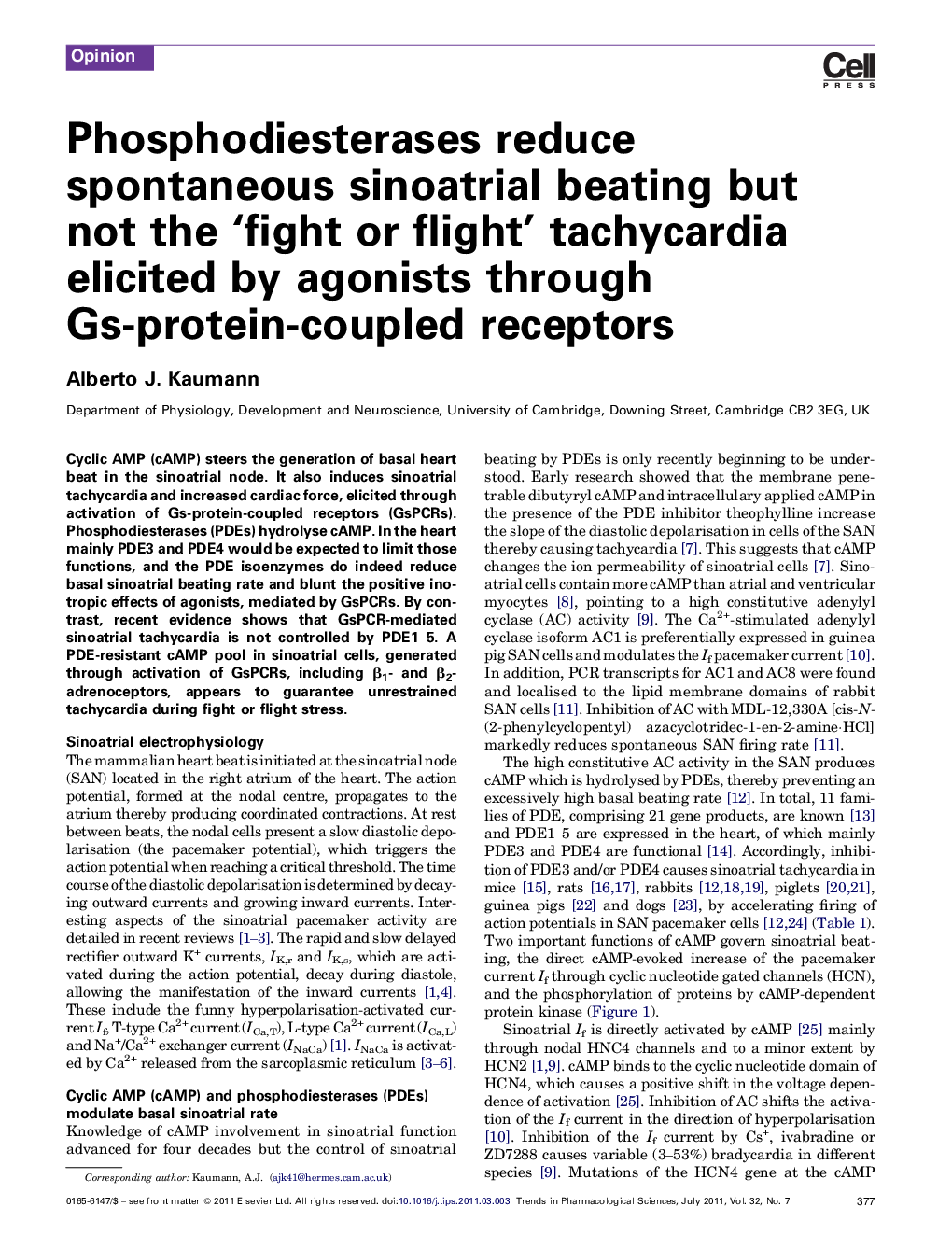| Article ID | Journal | Published Year | Pages | File Type |
|---|---|---|---|---|
| 2572991 | Trends in Pharmacological Sciences | 2011 | 7 Pages |
Cyclic AMP (cAMP) steers the generation of basal heart beat in the sinoatrial node. It also induces sinoatrial tachycardia and increased cardiac force, elicited through activation of Gs-protein-coupled receptors (GsPCRs). Phosphodiesterases (PDEs) hydrolyse cAMP. In the heart mainly PDE3 and PDE4 would be expected to limit those functions, and the PDE isoenzymes do indeed reduce basal sinoatrial beating rate and blunt the positive inotropic effects of agonists, mediated by GsPCRs. By contrast, recent evidence shows that GsPCR-mediated sinoatrial tachycardia is not controlled by PDE1–5. A PDE-resistant cAMP pool in sinoatrial cells, generated through activation of GsPCRs, including β1- and β2-adrenoceptors, appears to guarantee unrestrained tachycardia during fight or flight stress.
